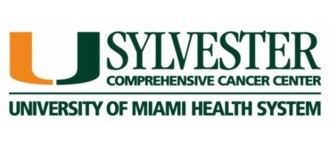



    |
|
|
Limited. By: Reuters Health 
(Reuters
Health) Urology
2002;60:270-275. HIGH SCHOOL STUDENT
WHO DOES
CANCER RESEARCH TO COMPETE IN PRESTIGIOUS FAIR Lisa Deffendall When David
Soleimani-Meigooni was a fourth-grader, he was experimenting with
middle school
science concepts.In fifth and sixth grades, his analyses of chromosomes
and DNA
were on par with high school work. From seventh grade on, David's
annual
science fair projects were clearly college-level endeavors.Now 17, the
Paul
Laurence Dunbar High School senior is doing cancer research that most
scientists do not tackle until they are pursuing doctoral
degrees.This
weekend, he will present his work at the regional finals of the Siemens
Westinghouse Competition, one of the nation's leading science, math and
technology contests
for high school scholars.David is the only student from Kentucky chosen
to
travel to Georgia Tech for the southern region finals. Although 1,200
students
across the country entered the contest this year, only 70 have
reached
this level of the competition, said Marie Martin, spokeswoman for the
Siemens
Foundation. Thirteen teen-age scientists will face off in Atlanta.The
top
individual and group projects chosen today will each win $3,000 and
advance to
the finals in Washington next month to vie for a first-place $100,000
scholarship.David is the son of Ali Soleimani-Meigooni, a professor of
medical physics at the University of Kentucky, and Sharifeh Dini, a
nurse who is
completing her third master's degree.His project examines the effects
of
curcumin, related to the cooking spice turmeric, on prostate cancer
cells. In
the research, which he said will be published soon in a
scientific journal,
David found that curcumin enhances the effect of radiation therapy on
cancer
cells by disrupting their natural survival instincts and causing
them to
die in greater numbers.With curcumin, seven times less radiation can be
used to
kill the same number of cancer cells, David said. He hopes his work
will eventually lead to advancements in the
treatment of the prostate cancer. A conversation with David is
challenging,
forcing a listener to recall long-forgotten vocabulary from high school
biology. Arcane terms -- micromolar, chromosome aberrations,
mitochondrial
pathways, apoptosis and radiosensitization -- roll easily off his
tongue as he
explains the latest evolution of work he began eight years ago. He
admits
with a smile that his discoveries are difficult to explain.David said
he found
his calling as a fourth-grader at Cassidy Elementary School when
he was
out of ideas for the upcoming science fair."One day I was at home glued
to
the television, and my mom was outside in the sun, gardening and
sunbathing and
all that stuff," he said. "When she came back in she said, 'You're
receiving too much radiation, get back from the TV.' That kind of
sparked
my imagination."Using a film that measures radiation, David set out to
prove to his mother that the radiation she was getting from the
sun was
worse than his exposure watching television or heating a snack in the
microwave.He wanted to learn more about radiation, but he was also
curious
about biology. His father introduced him to a colleague at a
radiobiology lab
at His projects
have built upon themselves, beginning with studies of radiation
treatments on
prostate cancer cells, continuing with experiments mixing curcumin
and
radiation, and most recently, examining the inner workings of cells to
understand why the curcumin enhances the killing properties of
radiation. He is
thankful for the help of other scientists in Ahmed's lab, including
Damo-daran
Chendil, who have been patient with his questions and have helped
him do
radiation protocols that he is not old enough to do legally.For David,
a
perennial standout at Fayette County and regional and state science
fairs, the work leading
up to the competition is as much fun as the contests themselves."When
you
can prove something so significant, something that no one has ever
known
before, or something that may be new and interesting, ... there's no
other
feeling like it in the world," he said.The teen-ager spends three days
a
week and most Saturdays working in the lab. Science is not his
only
endeavor though.At school, he is involved in several clubs, including
the
National Honor Society and the Cultural Society, which works to promote
cross-cultural understanding. He is an accomplished violinist, speaks
fluent
Farsi, volunteers at the UK Chandler Medical Center and serves on the
Mayor's
Youth Council and the Lexington Youth Leadership Academy.In the future,
David
wants to be a pediatric oncologist. He is applying to eight colleges,
including
Yale, UK and the University of Louisville, with a desire to continue
his cancer
research and go to medical school.He says he is encouraged every year
by the
number of elementary school students he sees competing in local science
fairs, but he would like to see Fayette County's public school
system encourage more middle and high school students to participate."A
lot of the reason that kids don't do research is maybe a little of the
stigma
of being a science nerd or spending all your time at labs and that
whole
'lab rat' kind of image, but it's not really that at all," he said.
"Science is just another outlet of expressing yourself.please visit http://www.kentucky.com
Going for
the GRID: Last Chance Radiation therapy Gives patients New Hope.
In Odyssey Online (Medicine) Gov.
Paul Patton recognizes UK and U of L Lung Cancer Researchers, 2001
|
This site is designed and maintained by
Mohammed Momin Shareef and Shahid
Mohammed Saleem
Last updated on11/27/2005